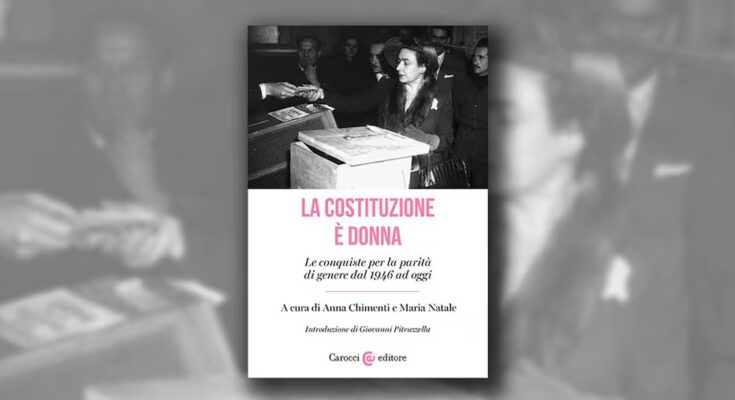Starting from the actions of the Constituents, elected on June 2, 1946, to the current questions, still open, regarding the path of gender equality: The Constitution is female, the collective volume just published by Carocci to which various legal experts contribute, has the benefit of touching on many stages of a journey that is still unfinished. And perhaps what is most interesting lies in the latest results, in addition to the space given to nine members of the Christian Democratic Party, nine members of the Communist Party, two members of the Socialist Party and one representative of the Everyman Party who sat in the Assembly (which was eventually discussed in several publications). Without them, our democracy would be different. This book focuses, among other things, on surrogacy, regulations regarding gender violence, women’s diplomacy, and the use of the mother’s surname. The issue of women’s entry into politics is addressed by recalling the principle of equal access to elective positions which has resulted in women’s quotas at the city and regional levels. And it cited a subsequent amendment to article 51 of the Constitution that strengthened the idea that the Republic should promote equal opportunities between women and men with respect to public office and elective positions. However, in electoral dynamics, quota mechanisms are often circumvented by favoring men and thereby betraying the spirit of the law: as can be seen from the existing figures, equality is still the goal to be achieved. The pages on women in universities are interesting (and disappointing), as there has been progress over the years, but a situation of inequality in top positions still exists (in 2022 the number of full professors will equal 26.94 percent). In fact, stereotypes and a lack of well-being tools continue to be a heavy burden that – as is the case in many professional fields – harms the path of those who wish to undertake research. A gap related to general problems in the university system, characterized by a “rigid logic of competitiveness and co-optation”, observe the authors. This does not ignore some encouraging data, such as 55.6% of women in new enrolments, and the number of graduates, higher (57.3%) than graduates in recent years. Finally, contributions to equity in health protection explore a little-explored, but crucial, topic because biological and gender differences influence disease onset, treatment identification, and drug effectiveness. In Italy, the first law on gender medicine dates back to 2018.
© ALL RIGHTS RESERVED
Anna Chimenti and Maria Natale (edited by)
The Constitution is female. Achievement for equality gender from 1946 to the present
Introduction by Giovanni Pitruzzella
Carocci, page. 164, €19



